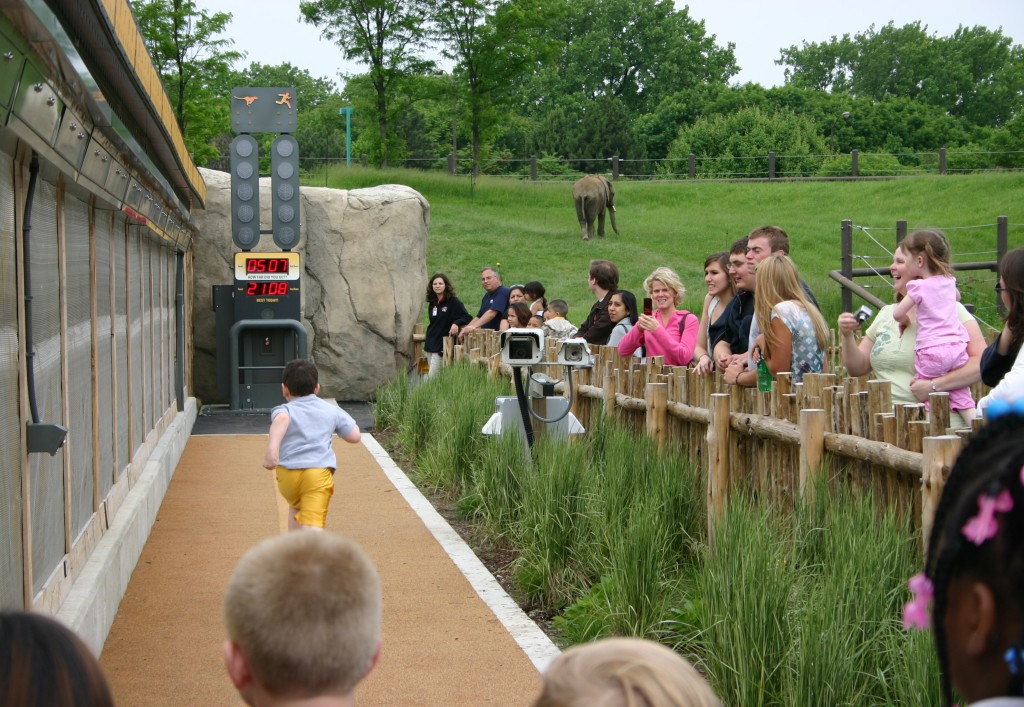[twocolumns]
Martin Palicki,
IPM editor
At the recent SATE conference (produced by the Themed Entertainment Association and hosted by Carnegie Mellon University) several speakers talked about the importance of creating meaningful bonds between institutions and guests. Google’s Josh Jeffery showed a video of how even Gmail can become an emotional product. Anna Musun-Miller from the Indianapolis Zoological Society reminded us that we need to share the importance of conservation with guests. More importantly, we have to give guests we have inspired a reaction in a way to act, or else hopelessness and despair can multiply.
In other words, it’s all about making connections. Connecting people to experiences, to stories and to opportunities to effect change. People want to feel connected to the world and to one another, and experience-based institutions and entertainment have golden opportunities to do just that.
Playing off of our intrinsic competitive nature is one option. Musun-Miller’s Indianapolis Zoo offers a “race a cheetah” game for kids to see how fast they can sprint, and the fifty-cent entry fee is donated to a cheetah preservation fund.
Waterparks are turning to products like Slideboarding to connect guests to one another as they compete for the best score on a waterslide. The technology is turning a solitary experience into a shared game.
People aren’t the only ones making connections. Our entire industry is recognizing the links between theme parks, waterparks, zoos, aquaria and museums.
This issue of IPM highlights those connections and the variety of ways in which they are being implemented, specifically across waterparks, zoos and aquaria. There is real growth opportunity here for those who understand how these worlds are intersecting and those who have the skills to help make the connections.
**Look for InPark at EAS, WWA and IAAPA during the busy fall trade show season**
Judith Rubin,
IPM co-editor
Urbanization marches inexorably on, wild places shrink and the longing for nature intensifies. In my own neighborhood in Saint Louis I’ve been impressed by how many people now share the fervor for native plant gardens. Often we don’t know how much something means to us, how much we have taken its continuance for granted, or how integral it is to the world, until we are on the point of losing it. A single creature – the Monarch butterfly, for instance – becomes a symbol of many others.
There are many contradictions and ironies in the ways human concerns for wildlife are expressed – by individuals, groups, media and institutions – and the various things being advocated as solutions. Resolving that is beyond our scope. This discussion is about how to shape experiences that address those sensibilities and help build upon the motivation to do something meaningful.
When human population was much lower and wildlife much more abundant, exhibiting animals away from their habitat didn’t cause us the pangs it now does. The best new animal exhibits are invested in providing experiences for the animals that allow humans to sense what the animals’ world is like. Today, we want to witness animals being themselves, enjoying themselves, living their lives – and we want to see their joy up close.
It is not a perfect universe, but a better one, when everyone has the opportunity to play in the water, to climb, to sunbathe, to look out at the world and return the gaze of others from a favorite vantage point and to make decisions about where they will go next.

